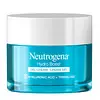What's inside
What's inside
 Key Ingredients
Key Ingredients

 Benefits
Benefits

 Concerns
Concerns

 Ingredients Side-by-side
Ingredients Side-by-side

Water
Skin ConditioningGlycerin
HumectantIsopropyl Palmitate
EmollientCetyl Alcohol
EmollientCetearyl Olivate
Sorbitan Olivate
EmulsifyingAlanine
MaskingMaltose
MaskingGlycine
BufferingAllantoin
Skin ConditioningLidocaine Hcl
Arginine
MaskingSerine
MaskingProline
Skin ConditioningThreonine
Ethylhexylglycerin
Skin ConditioningPentylene Glycol
Skin ConditioningCeramide NP
Skin ConditioningTropolone
Skin ConditioningSodium Hyaluronate
Humectant1,2-Hexanediol
Skin ConditioningCaprylyl Glycol
EmollientTrehalose
HumectantBetaine
HumectantUrea
BufferingFructose
HumectantGlucose
HumectantPCA
HumectantSodium PCA
HumectantGlutamic Acid
HumectantSodium Lactate
BufferingPalmitic Acid
EmollientStearic Acid
CleansingDimethicone
EmollientSodium Chloride
MaskingPolyacrylate Crosspolymer-6
Emulsion StabilisingC10-30 Cholesterol/Lanosterol Esters
EmulsifyingT-Butyl Alcohol
PerfumingSodium Hydroxide
BufferingCitric Acid
BufferingTocopherol
AntioxidantWater, Glycerin, Isopropyl Palmitate, Cetyl Alcohol, Cetearyl Olivate, Sorbitan Olivate, Alanine, Maltose, Glycine, Allantoin, Lidocaine Hcl, Arginine, Serine, Proline, Threonine, Ethylhexylglycerin, Pentylene Glycol, Ceramide NP, Tropolone, Sodium Hyaluronate, 1,2-Hexanediol, Caprylyl Glycol, Trehalose, Betaine, Urea, Fructose, Glucose, PCA, Sodium PCA, Glutamic Acid, Sodium Lactate, Palmitic Acid, Stearic Acid, Dimethicone, Sodium Chloride, Polyacrylate Crosspolymer-6, C10-30 Cholesterol/Lanosterol Esters, T-Butyl Alcohol, Sodium Hydroxide, Citric Acid, Tocopherol
Water
Skin ConditioningGlycerin
HumectantCaprylic/Capric Triglyceride
MaskingPentaerythrityl Tetraethylhexanoate
EmollientNiacinamide
SmoothingCeramide NP
Skin ConditioningCholesterol
EmollientPhytosphingosine
Skin ConditioningPolyglyceryl-3 Methylglucose Distearate
EmulsifyingStearic Acid
CleansingOleic Acid
EmollientLactic Acid
BufferingTromethamine
BufferingCamellia Sinensis Leaf Extract
AntimicrobialHydroxyacetophenone
AntioxidantCetearyl Alcohol
EmollientCarbomer
Emulsion StabilisingXanthan Gum
Emulsifying1,2-Hexanediol
Skin ConditioningWater, Glycerin, Caprylic/Capric Triglyceride, Pentaerythrityl Tetraethylhexanoate, Niacinamide, Ceramide NP, Cholesterol, Phytosphingosine, Polyglyceryl-3 Methylglucose Distearate, Stearic Acid, Oleic Acid, Lactic Acid, Tromethamine, Camellia Sinensis Leaf Extract, Hydroxyacetophenone, Cetearyl Alcohol, Carbomer, Xanthan Gum, 1,2-Hexanediol
 Reviews
Reviews

Ingredients Explained
These ingredients are found in both products.
Ingredients higher up in an ingredient list are typically present in a larger amount.
1,2-Hexanediol is a synthetic liquid and another multi-functional powerhouse.
It is a:
- Humectant, drawing moisture into the skin
- Emollient, helping to soften skin
- Solvent, dispersing and stabilizing formulas
- Preservative booster, enhancing the antimicrobial activity of other preservatives
Ceramide NP is a type of ceramide and formally known as ceramide 3.
Ceramides are intercellular lipids naturally found in our skin that bonds dead skin cells together to create a barrier. They are known for their ability to hold water and thus are a great ingredient for dry skin.
Ceramides are an important building block for our skin barrier. A stronger barrier helps the skin look more firm and hydrated. By bolstering the skin ceramides act as a barrier against irritating ingredients. This can help with inflammation as well.
If you would like to eat ceramides, sweet potatoes contain a small amount.
Read more about other common types of ceramides here:
Ceramide AP
Ceramide EOP
Glycerin is already naturally found in your skin. It helps moisturize and protect your skin.
A study from 2016 found glycerin to be more effective as a humectant than AHAs and hyaluronic acid.
As a humectant, it helps the skin stay hydrated by pulling moisture to your skin. The low molecular weight of glycerin allows it to pull moisture into the deeper layers of your skin.
Hydrated skin improves your skin barrier; Your skin barrier helps protect against irritants and bacteria.
Glycerin has also been found to have antimicrobial and antiviral properties. Due to these properties, glycerin is often used in wound and burn treatments.
In cosmetics, glycerin is usually derived from plants such as soybean or palm. However, it can also be sourced from animals, such as tallow or animal fat.
This ingredient is organic, colorless, odorless, and non-toxic.
Glycerin is the name for this ingredient in American English. British English uses Glycerol/Glycerine.
Learn more about GlycerinStearic Acid is a fatty acid. It is an emollient, emulsifier, and texture enhancer.
As an emollient, stearic acid helps soften skin. It aids the skin's protective barrier by preventing water loss. It also provides a gentle cleansing effect without stripping away natural oils.
Stearic acid may also be used to enhance the texture of products. It can add volume and stabilize ingredients such as water and oil. This can help water and oil ingredients from separating.
Sources of stearic acid include animal or vegetable fats/oils such as coconut or shea. It can be naturally found in butter, cocoa butter, shea butter, vegetable fats, and animal tallow.
This ingredient may not be Malassezia folliculitis, or fungal-acne safe.
Learn more about Stearic AcidWater. It's the most common cosmetic ingredient of all. You'll usually see it at the top of ingredient lists, meaning that it makes up the largest part of the product.
So why is it so popular? Water most often acts as a solvent - this means that it helps dissolve other ingredients into the formulation.
You'll also recognize water as that liquid we all need to stay alive. If you see this, drink a glass of water. Stay hydrated!
Learn more about Water